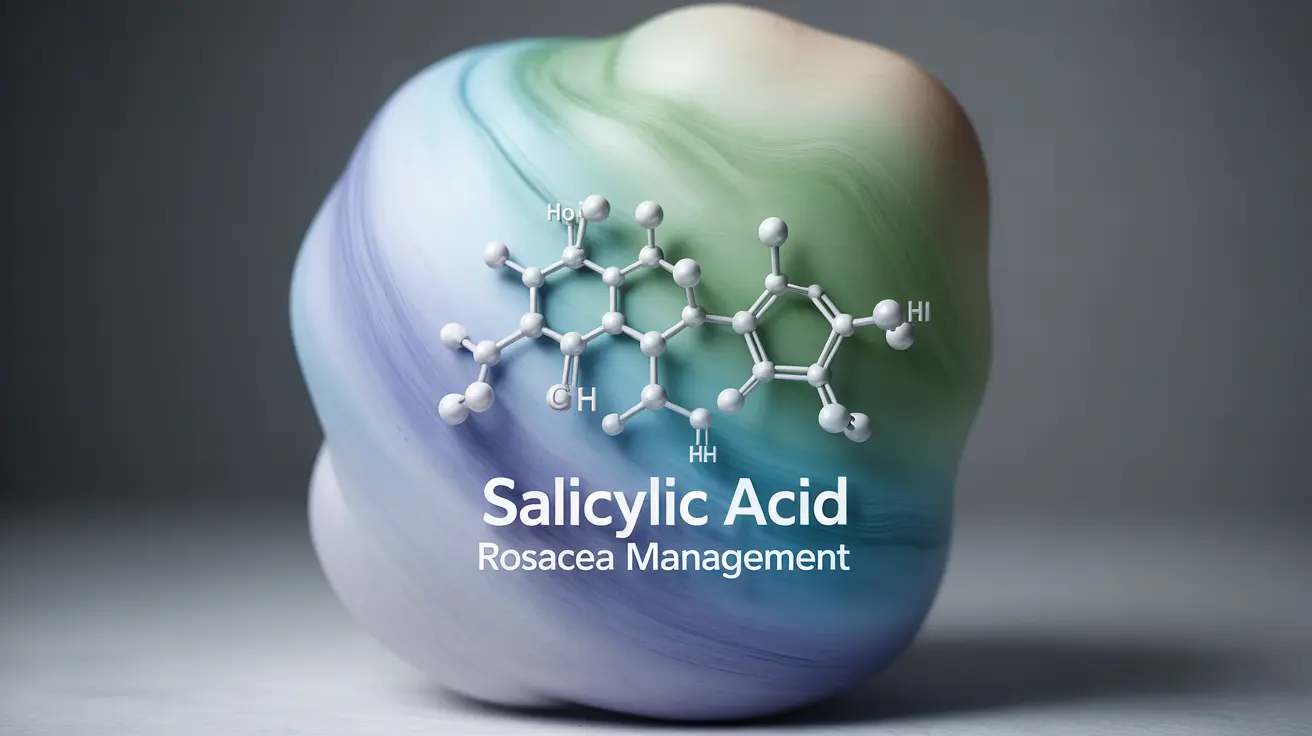For individuals managing rosacea, choosing the right skincare ingredients can be challenging. Salicylic acid, a beta-hydroxy acid (BHA) commonly used in skincare, has garnered attention for its potential role in rosacea management. Understanding how this ingredient interacts with rosacea-prone skin is crucial for developing an effective skincare routine.
This comprehensive guide explores the relationship between salicylic acid and rosacea, examining its safety profile, benefits, and potential risks for those with this sensitive skin condition.
Understanding Salicylic Acid and Its Effects on Rosacea
Salicylic acid is a oil-soluble exfoliant that penetrates deep into pores, helping to remove dead skin cells and reduce inflammation. For rosacea sufferers, this ingredient's anti-inflammatory properties might seem appealing, but its use requires careful consideration and proper application techniques.
How Salicylic Acid Works
When applied to the skin, salicylic acid works by:
- Dissolving dead skin cells
- Reducing inflammation
- Clearing pore blockages
- Regulating oil production
The Science Behind Supramolecular Salicylic Acid
Recent research has shown promise in using 30% supramolecular salicylic acid formulations for papulopustular rosacea. This specialized form of salicylic acid is designed to be gentler on sensitive skin while maintaining its therapeutic benefits. The supramolecular structure helps control the release of the active ingredient, potentially reducing irritation.
Safety Considerations and Potential Risks
While salicylic acid can offer benefits, individuals with rosacea should approach its use with caution. The skin barrier in rosacea-prone skin is often compromised, making it more susceptible to irritation from active ingredients.
Common Side Effects
Users should be aware of potential side effects, including:
- Skin dryness
- Temporary redness
- Mild stinging or burning
- Increased sensitivity to sunlight
- Potential flare-ups in some cases
Best Practices for Using Salicylic Acid with Rosacea
To minimize risks and maximize benefits when using salicylic acid on rosacea-prone skin, consider these guidelines:
Application Tips
- Start with a lower concentration (0.5-1%)
- Patch test before full application
- Apply only once or twice weekly initially
- Use gentle, fragrance-free formulations
- Always follow with a protective moisturizer
Recommended Skincare Routine
A successful skincare routine for rosacea-prone skin should focus on gentle cleansing, careful exfoliation, and robust barrier support. When incorporating salicylic acid:
- Cleanse with a mild, non-foaming cleanser
- Apply salicylic acid treatment sparingly
- Wait 5-10 minutes before applying other products
- Use a ceramide-rich moisturizer
- Always finish with broad-spectrum sunscreen during daytime
Frequently Asked Questions
Is salicylic acid safe to use on skin affected by rosacea?
Salicylic acid can be safe for rosacea-prone skin when used properly and in appropriate concentrations. Start with a low percentage (0.5-1%) and introduce it gradually into your skincare routine. Always perform a patch test first and discontinue use if irritation occurs.
How does 30% supramolecular salicylic acid help improve symptoms of papulopustular rosacea?
Supramolecular salicylic acid helps manage papulopustular rosacea through its controlled release mechanism, which reduces inflammation while minimizing irritation. The special molecular structure allows for better tolerability while maintaining its therapeutic effects on inflammatory lesions.
What are the common side effects of using salicylic acid treatments for rosacea?
Common side effects may include temporary redness, mild stinging, dryness, and increased skin sensitivity. These effects are usually mild and decrease with continued use, but some individuals may experience more severe reactions requiring discontinuation.
Can salicylic acid cause flare-ups or irritation in people with rosacea-prone skin?
Yes, salicylic acid can potentially trigger flare-ups in some individuals with rosacea, particularly if used in high concentrations or too frequently. This risk can be minimized by starting with lower concentrations and gradually increasing usage as tolerance develops.
What are the recommended skincare practices for managing rosacea and reducing irritation from exfoliants like salicylic acid?
Key practices include using gentle cleansers, introducing exfoliants gradually, maintaining consistent moisturization, protecting skin from sun exposure, and avoiding known triggers. When using salicylic acid, apply it sparingly, use lower concentrations, and always follow with appropriate moisture barrier support.




